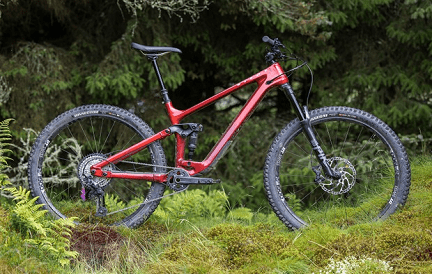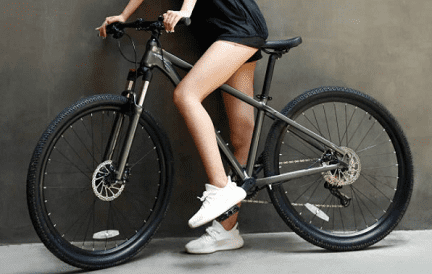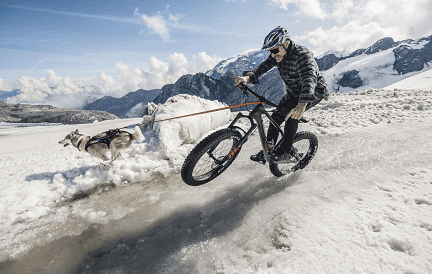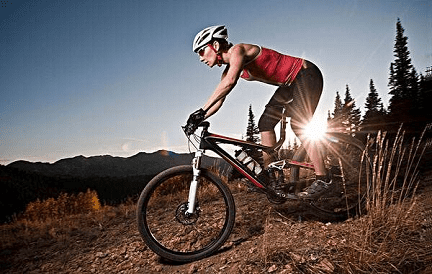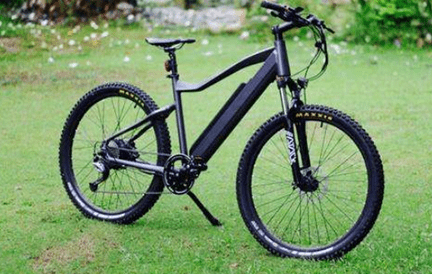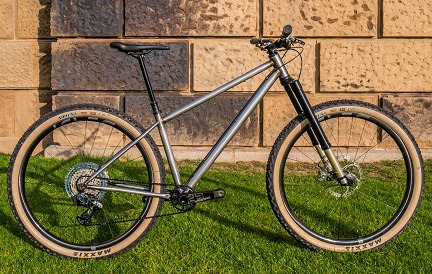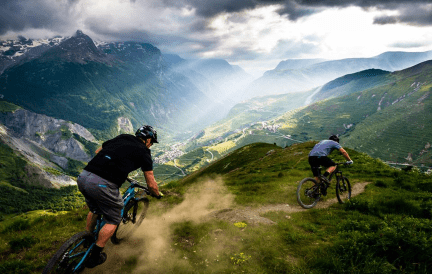The best hardtail under 2000 are usually acquired by beginners because they usually opt for spending lesser on mountain biking in their quest to check if their passion lie with it. Seasoned pros looking to buy on a budget also go for the best hardtail under 2000. So if you intend to acquire an hardtail mountain bike under 2000, knowing there are a lot of riding places and varieties of mountain bikes designed for all manners of races, terrain, trails and that hardtail mountain bikes are suitable for rides on roads on smoother trails.
- Part 1: How to Select the Best Hardtail Mountain Bike Under 2000
- Part 2: Components of the Best Hardtail Under 2000
- Part 3: Wheel Sizes on Hardtail Mountain Bikes
- Part 4: Best Hardtail Under 2000
- Part 5: Mountain Biking Helmet Types
- Part 6: Mountain Bike Protective Pads
- Part 7: Mountain Biking Shoes
- Part 8: Bike Tire Flat Emergency Repair Kit
- Part 9: Mountain Bike Gloves
- Part 10: Suitable Mountain Biking Sunglasses
- Part 11: Suitable Outfit for Mountain Biking
- Part 12: Mountain Biking Packs
Part 1: How to Select the Best Hardtail Mountain Bike Under 2000
It is very important to figure out your desired features such as size, performance, model, and production materials before you look into the best available hardtail bikes in your budget. This will help you research the one that work for you. Mountain bikes differ with their materials; there’s the choice between aluminum and carbon fiber. Aluminum-framed bikes such as the Roscoe 8 by trek is an hardtail mountain bike under 2000, thus more affordable when compared to carbon bikes.
Its alpha gold aluminum frame enhances ride performance and helps improve overall stability. This hardtail mountain bike features 27.5 plus tires which allows for traction and gives you confidence on the trails. Also, if it is imperative to have durable and long-lasting hardtail bike, then steel and titanium hardtail mountain bikes are great choices. If you’re new to mountain biking, the mountain bike sizing guide helps you choose the right hardtail bikes under 2000. It will allow you to ride with confidence and at the same time, stay within your budget that fulfills your needs.

Part 2: Components of the Best Hardtail Under 2000
Included in the hardtails mountain bike components are the drivetrain parts including derailleur, chain, shifters and brakes. Cockpit components and touch points such as handlebars and saddle needs considerations when purchasing hardtail bikes under 2000.
Part 3: Wheel Sizes on Hardtail Mountain Bikes
At the onset, the standard wheel size for hardtail mountain bikes were 26″ but new and different sizes of wheel have taken over. Now, riders are able to choose and experiment with wheels and tires that work best for them and their riding.
The hardtail mountain bikes market now has variety of size options, differing in advantages, disadvantages and characteristics. 26″ wheels are no longer in high demand, so it’s easier to get them for hardtails bikes at affordable prices. 27.5″ is adequate for riders who ride steep, technical tracks and are in need of a playful bike. 27.5″ has taken the place of 26″ wheels thereby becoming the smallest wheel size for enduro and downhill style bikes. It is more helpful to shorter riders who find 29″ too hefty.
Part 4: Best Hardtail Under 2000
The Kona Unit
The Kona Unit at $1,100 is a single speed fully rigid hardtail bike under 2000 with a reasonable 32×18-tooth gearing set-up. It has plus-size tires which reduces impact effect and turns most trails into fun experience. Apart from the occasional checks on its bearing systems and brake pads, the unit is easy to maintain. If you do not want to worry much about maintaining expensive components all the time and still be able to ride your bike hard, the Kona Unit is a great choice.
Norco Fluid HT 2
With its TranzX dropper post, NX 11-speed drivetrain and Truvativ Stylo cranks, the Norco Fluid HT 2 deals a good offer at $1,350. It has features wouldn’t be amiss on bikes that cost slightly more. Asides the possession of a 9×141-millimeter rear axle with a traditional QR skewer, the hardtail mountain bike has the unique characteristic of being built around 26+ tires in its XS and small sizes and thus a good hardtail bike choice for a little one.
Giant Fathom 29 – $1, 470
The Giant Fathom 29 is one of the top hardtail mountain bikes under 2000 because of its value-oriented characteristics. It features an aluminum frame and a component package that is trail-ready. Its 29-inch wheels powered by a 1×11 Shimano SLX drivetrain with an 11-46 cassette and slowed by Shimano MT-400 hydraulic brakes. The 100-millimeter-travel SR Suntour Axon 32 LO-R has a 15-millimeter through-axle and is air-sprung and fluid-dampened.
Commencal Meta HT AM Essentials – $1, 600
They are hardtail bikes under 2000 with a 1×11 SRAM NX drivetrain which make them a good choice if you plan to explore rough terrains. Its 200-/180-millimeter rotors helps with the steep descents this hardtail bike begs to be ridden down. The commencal features a 160-millimeter Rockshox Yari which holds up the front end and its head angle is a slack 65 degrees. Included in this hardtail bike are 13 alloy wheels and skin wall 27.5×2.6 Vee Tire Co Flow Snap tires.
Specialized Fuse Comp 6Fattie – $1, 650
The plus-size Fuse is one of the best hardtail mountain bikes under $2000, it is fully boosted and upgrade worthy. Its 120-millimeter Rockshox Recon RL and more conservative geometry enables more trail-riding for the fuse. Its burly 3-inch specialized purgatory tires have enough float and traction to get through rough terrains. It possesses SRAM level brakes and 200-/180-millimeter rotors on larger sizes and 180-/160-millimeter rotors on the smaller sizes.
Part 5: Mountain Biking Helmet Types
Irrespective of what a rider chooses to or not to wear, a rider should not ride a bike without an helmet on. As opposed to the belief that helmets are bulky, there are modern, well-ventilated and lighter ones. The single most important piece of mountain bike gear a rider can buy is a new, well-fitting protective helmet. It is known not only to reduce the odds of head injury by 50 percent but also odds of face and neck injury.
We have three types of mountain biking helmets. There are XC helmets which are without a visor, sleek and lightweight, full-face helmets which provides the most protection. The trail helmets are mostly purchased by recreational bike riders although the helmets are often used interchangeably. When it comes to splurging for your mountain bike gear, your helmet is a good option. It has been recommended by many riders that it is better to invest in a mountain bike-specific helmet with MIPS (Multi-directional Impact Protection System) due to its added protection when compared to a general one.
Part 6: Mountain Bike Protective Pads
When starting out or learning to ride a mountain bike, cuts and bruises are almost unavoidable. This makes the purchase of mountain bike protective pads such as knee pads highly recommended. It is important to choose comfortable ones that stay put while riding. Well-fitting, protective knee pads made of soft and flexible breathable armor provide safety and allow for a confident ride.
There are two basic forms that trail riding knee pads take; the ones that are held up with velcro straps or the sleeve-style pads with armor sewn into a fabric, comfort should be greatly considered when choosing knee pads. Though it is common for most people not to wear it, elbow pads are useful for protection of the arms. The arm is another part of the body prone to taking a hit if there’s a fall. Larger, heavier armor pads for downhill riding on more technical terrain.
Part 7: Mountain biking shoes
Any shoe you’re comfortable running in, skating or skateboarding is suitable for mountain biking. But the more interested you get in mountain biking, the more the prospect of mountain biking-specific shoes become appealing and worth purchasing. Mountain biking shoes usually have a flatter, stiffer sole with sticky rubber to help you pedal and stay onto the pedals on rough terrains.
It is common for riders to start out riding standard flat pedals. As you become better at mountain biking, you may lean towards clipless pedals. Clipless pedals usually require clipless mountain bikes shoes to work adequately. Clipless pedals enable you to clip in to your pedals with a cleat on your shoe, this ensures the attachment of your feet to the pedals which aid pedaling and climbing technical terrain that can bounce your feet off the pedals. There exist riders that make use of both the flats and clipless pedals therefore, it’s a personal choice.
Part 8: Bike Tire Flat Emergency Repair Kit
Trail riding certainly takes it toll on bikes and other equipment used and so, sometimes create scenarios in need of bike tire flat emergency repair kit after some riding. Contained in a good bike tire flat emergency repair kit are enough tool and supplies to use without having to call for help when there’s a hitch. Such tool doesn’t have to be bulky, it only need contain the essentials. Essential tool includes a spare inner tube or more depending on your ride duration and the terrain you intend to ride on and an inflation device which can either be a CO2 inflation device or a compact hand pump.
Commonly encountered on the trail are punctures due to hard impacts and the presence of sharp rocks. This has led to the emergence of modern tubeless tires that are less susceptible to punctures and small punctures on them can easy to repaire with the use of sealant. But in cases where tire punctures are not easily remedied with a sealant, a tire plug comes in handy.
Part 9: Mountain Bike Gloves
Mountain bike gloves protect our palms from skinning when there’s a fall. We use our instincts to land on our hands, making the hands one of the most vulnerable parts of our body when there’s a crash. Mountain bike-specific gloves have very thin leather providing more grip and control when compared to protective work gloves. Mountai-bike specific gloves give comfort without compromising their safe qualities. A proper mountain bike gloves protect your knuckles from rocks and trees.
Part 10: Suitable Mountain Biking Sunglasses
Our eyes are protected not only from UV rays but also harmful substances that are injurious to the eyes with the use of mountain biking sunglasses. Biking-specific glasses have certain features which are not common to all-purpose sunglasses. They have interchangeable lenses for different light conditions to make sure they stay put during a ride.
Part 11: Suitable Outfit for Mountain Biking
Mountain bike jerseys and shorts are made from synthetic materials that are protective, breathable, and quick-drying. They are known to be great for mountain biking. The jerseys offer different sleeve options to suit your preference. Bike shorts protect your lower back from exposure as they rise up higher in the back when compared to casual shorts. The padded chamois sewn into the bottom of cycling shorts help the rider to relieve pressure and increase comfort on the bike saddle.
Part 12: Mountain Biking Packs
A backpack, hip pack or fanny pack allows you to bring with you some necessities while on the trail. Necessities such as emergency kits, phone, wallet, keys and food are easy to carry. Mountain biking packs contain hydration bladder which makes it easy to carry more water and drink it while riding.

